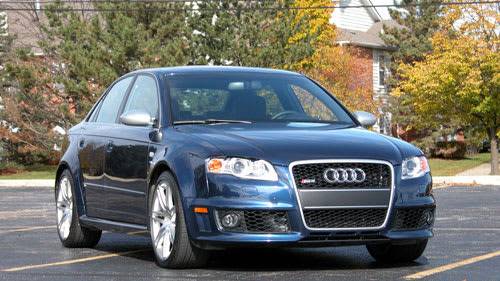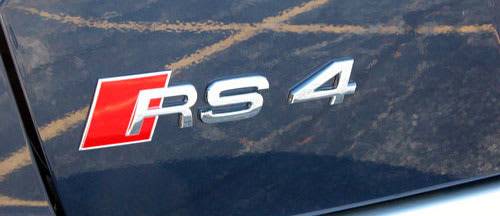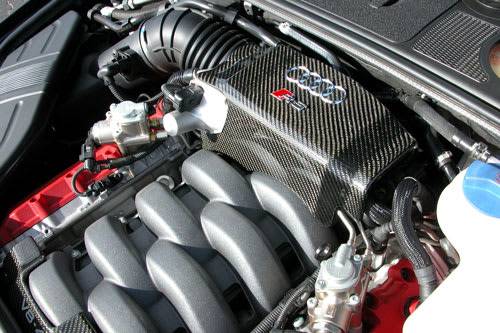Kicking S: Audi RS4 - An S4 With More


As I explained in the first installment of this series, Audi markets souped-up versions of its cars with the S designation. So what is the RS4? RS is like S, but more so. The analogy is old and tired, but if these cars are A4s on steroids, then the S4 is Jose Canseco and the RS4 is Barry Bonds.
Things are more confusing than ever, unfortunately, because Audi now has “S Line” option packages that give A4s suspension upgrades and the appearance of an S car without the muscle to back it up. False advertising, if you ask me. The S and RS are real players; the S Line is the tailgating fan who’s not on the juice so much as the sauce.
The only RS model sold in the U.S., the RS4 ($66,000 base, $73,520 as equipped) looks like an S4, but the only sheet metal it shares are the front doors and the roof. The body is wider, with more prominent wheel arches, and the nose is different.

The RS4 addresses several of my complaints about the S4. The main one is that the Quattro all-wheel drive sends 60 percent of the power to the rear wheels and 40 percent to the front, compared to the A4 and S4’s 50/50 split. (Technically it’s torque, not power, but that word tends to elicit blank stares.) The extra power in the rear helps balance the car’s weight between the front and rear tires when accelerating through a turn.

Though Audis are nose-heavy, which makes the front want to push wide in aggressive cornering, power to the rear wheels has the effect of shifting some weight rearward in a way the 50/50 split can’t. Careful acceleration lets all four tires share equally the job of holding onto the road. This means you can take turns faster. Or you can deactivate the stability system, nail the throttle and hang the tail out, as you can in a rear-drive car.
A Dynamic Ride Control system, developed by Yamaha, transfers hydraulic fluid from either front shock absorber to the one in the opposite corner, which really keeps the body flat as the car darts left and right. Despite the firmer suspension, the RS4’s ride quality is absolutely livable for a car of its capabilities. The handling/ride tradeoff that once defined sporty-car compromise is now a fading memory.

Speaking of fast, the RS version of the 4.2-liter V-8 adds another 80 horses to the S4’s, for a total of 420 horsepower. Audi cites a 0 – 60 mph time of 4.8 seconds. The car presses you into your seat in a way few cars do. This version of the V-8 has an 8,250 rpm redline — remarkable for a V-8 — compared to the S4’s 7,000 rpm. The rate of acceleration doesn’t seem to poop out in the higher revs. The thing goes to 70 mph in 2nd gear, so even the unskilled can tromp on the pedal, shift once and rocket to speed with the best of ’em. A dashboard button marked “S” makes the accelerator more sensitive and opens a louver in the muffler that makes the exhaust louder. Neat trick.
The RS4 also has more oomph from a standing start — interesting because the engine’s power/torque specs are even more lopsided in this version. The torque is only 15 pounds-feet greater, at 317, and the peak is at a high 6,000 rpm, but Audi says 90 percent is on call from 2,250 to 7,600 rpm. That’s how it felt to me. Like the base S4, the RS4 has a six-speed manual gearbox, but the ratios are different between the two. This car has better, if not great, accelerator response, and the steering felt more direct to me. The RS4 is a far better car, but I think this says as much about the S4 as it does the RS4. The $12,000 isn’t chump change, but when it comes to sports cars, there’s no telling what people are willing to pay.
Next up: The Audi S6 — the best of S.

Former Executive Editor Joe Wiesenfelder, a Cars.com launch veteran, led the car evaluation effort. He owns a 1984 Mercedes 300D and a 2002 Mazda Miata SE.
Featured stories




